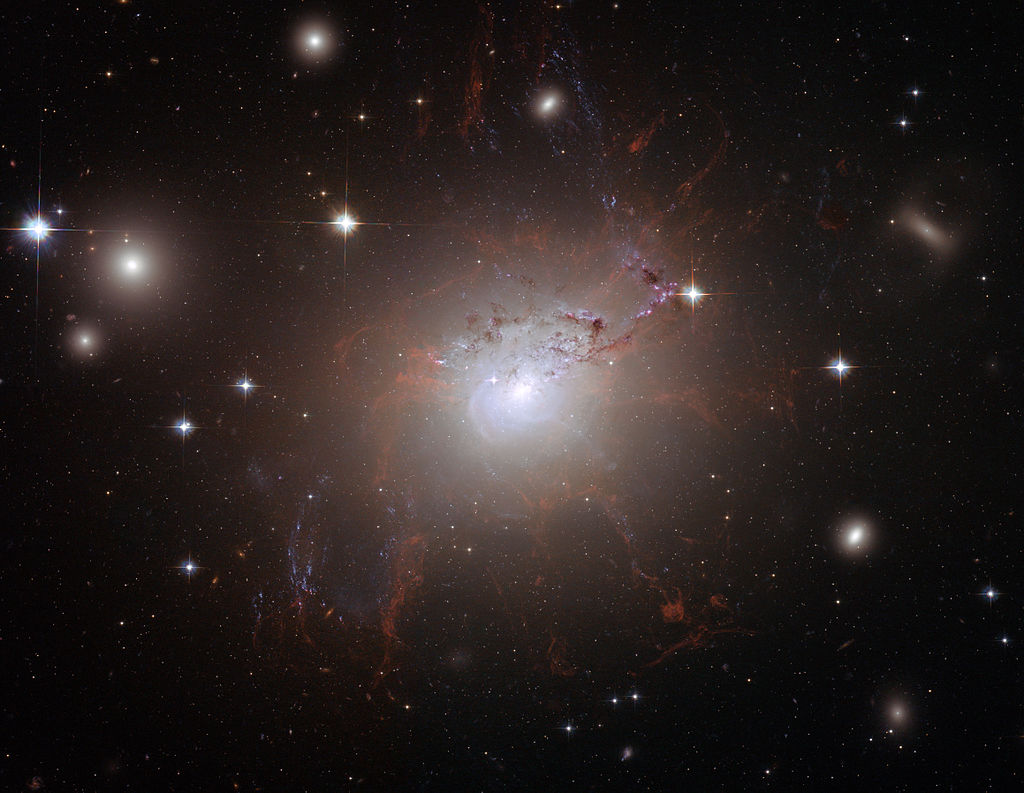NGC 1275 Hubble
The filaments are dramatic markers of the feedback process through which energy is transferred from the central massive black hole to the surrounding gas. The filaments originate when cool gas is transported from the center of the galaxy by radio bubbles that rise in the hot interstellar gas.
At a distance of 230 million light-years, NGC 1275 is one of the closest giant elliptical galaxies and lies at the center of the Perseus cluster of galaxies.
The galaxy was photographed in July and August 2006 with the Advanced Camera for Surveys in three color filters.
Coordinates Position (RA): 3 19 48.39 Position (Dec): 41° 30' 41.00" Field of view: 3.86 x 2.99 arcminutes Orientation: North is 8.5° left of vertical
Colours & filters Band Wavelength Telescope Optical B 435 nm Hubble Space Telescope ACS Optical V 550 nm Hubble Space Telescope ACS Optical R 625 nm Hubble Space Telescope ACS.
Relevante Bilder
Relevante Artikel
NGC 1275NGC 1275 ist die zentrale Galaxie des Perseus-Galaxienhaufens. An der Galaxie manifestiert sich eine außergewöhnliche Vielfalt astrophysikalischer Phänomene und sie war Gegenstand einer Vielzahl von Untersuchungen. So wurde sie etwa als Cooling-Flow-Galaxie, ungewöhnliche Seyfertgalaxie vom Typ 1, BL-Lac-Objekt und als LINER-Galaxie klassifiziert. Zudem ist sie insbesondere eine starke Radioquelle (FRI-Radiogalaxie). Ihre Entfernung von der Milchstraße wird auf rund 240 Millionen Lichtjahre geschätzt. .. weiterlesen
PerseushaufenDer Perseushaufen (Abell 426) ist ein Galaxienhaufen im Sternbild Perseus. Er ist etwa 240 Millionen Lichtjahre entfernt. Seine mittlere Radialgeschwindigkeit beträgt rund 5400 Kilometer pro Sekunde. Er ist einer der nächsten reichen Galaxienhaufen und umfasst etwa 500 bis 1000 Galaxien, die sich am Himmel über ein Gebiet mit einem Durchmesser von etwa 15° verteilen. Er besteht vor allem aus gelblichen elliptischen und linsenförmigen Galaxien und hat eine geschätzte Gesamtmasse von 2 · 1015 Sonnenmassen. Nach dem Schema von Rood und Sastry (RS-Schema) wird der Haufen aufgrund seiner langgestreckten Form als Typ L klassifiziert. .. weiterlesen





